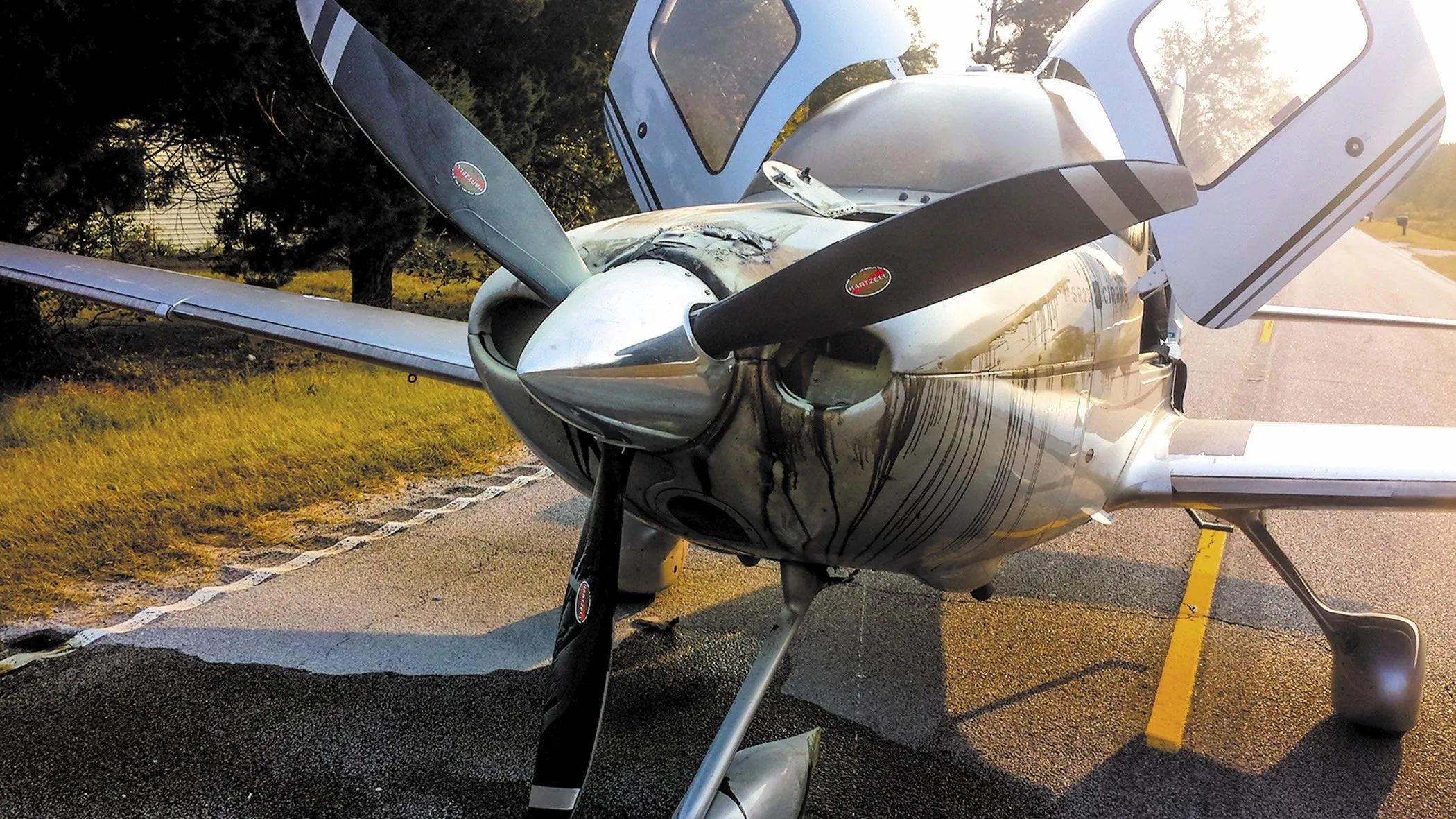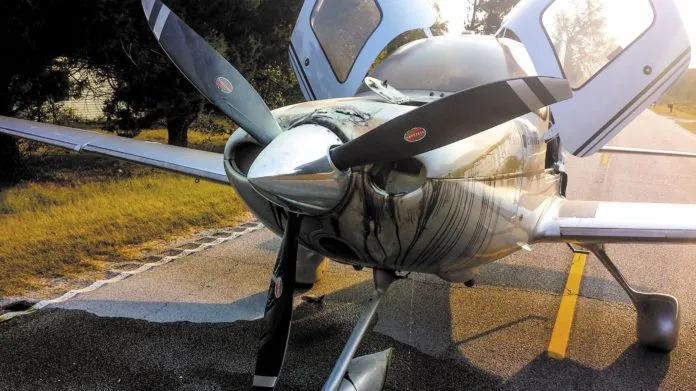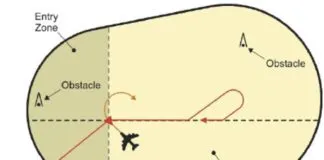Every single emergency procedure you can imagine should follow the basic outline of “aviate, navigate, communicate” on the pilot’s side of things, but what does ATC do? It’s actually kind of backwards. We communicate with you first to find out what you might need, then we navigate other conflicting airplanes out of your way so that you can aviate to a safe runway or landing site.
It should be obvious that we never say the words, “Declare,” “Emergency,” “Mayday,” or “Pan-Pan” unless we indeed have a dire situation. These words have the potential to flip a controller’s airspace upside down faster than a Vmc roll, so they should be used with discretion. Even saying “Declare” by itself could lead us to believe that assistance is needed, as well as “Pan-Pan” (Urgent condition). Because Pan-Pan is considered an urgent condition (maybe not a full-blown emergency), it has the potential to turn into “Mayday” (Distress) so we mostly treat it as such.
These key words over a frequency are triggers for ATC. We pull out checklists and start running them while assessing the pilot’s needs and what we can do. ATC is required to “meet the needs of the emergency,” which means we do everything in our power to get you out of your situation quickly and safely. Emergencies come in all shapes and sizes, from a blown tire to a full engine out. Effective communication during this event can help shape the outcome.

General Emergencies
Using a personal term, a “general” emergency is an emergency where ATC is talking to the aircraft in question and has the ability to assist after the pilot has declared and/or passed intentions. To a pilot, the degree of urgency depends on what the emergency is. A single radio failure with two radios on board isn’t much of big deal. What if your landing light doesn’t work? The degree depends on the experience of the PIC.
Now let’s think of the flip side. As I mentioned up front, ATC hears certain words and has to act. There are a few of us who are pilots as well and understand that if your landing light is out, we probably don’t need to roll the trucks, unless the pilot declares. Despite the training they give controllers on in-flight emergencies, it can be difficult to determine what the pilot needs if they don’t say the magic words. You might have a small problem not affecting the safety of flight, but ATC doesn’t understand and rolls the trucks anyway, just to be safe. In the end, it’s just a quick “Hello” from the fire chief or operations officer and that’s it.
If you are not sure if you should declare, just tell ATC of your problems, and together we’ll make a determination. I have several fire fighter friends on many airfields and they absolutely do not mind making a short drive around the airfield, even for a non-event, so don’t ever feel like you are bothering anyone. We’re all here for a reason!
First
Okay, then what does ATC do? Once we hear the trigger words, we will need four things: Aircraft callsign (which we would probably already have unless you were not on flight following or IFR), type aircraft (also probably known), nature of difficulty, and the PICs intentions. With these items we can determine the best course of action to help you.
Sometimes the PIC knows what he wants to do and where to go, but sometimes he doesn’t. After gathering info, ATC may throw out options to you, such as divert airports, headings back to your departure point, whatever you may need up to and including roads near you. Based on all the data provided, we might need to coordinate with adjacent facilities and let them know you are on the way.
In an emergency, ATC will use every resource available, including other controllers and facilities. It’s not anything controllers will argue or debate with each other about, when we use the word “emergency” talking to any other controller, the immediate response almost always is, “What do you need?” Tower controllers could need a runway; radar controllers might need a transition or to block departures momentarily; center controllers might need airspace below theirs if an airplane is in an emergency descent. We ask and we get it.
“So ATC moves everyone out of the way if I’m in distress?” The short answer is, “Anyone in the way…” To keep one emergency from turning into two or three, ATC will move other aircraft as needed to assist. For example, if I have five helicopters working on my field and a random jet comes in NORDO (No Radio), all I need to do is tell everyone to stop and move any helo’s that are near the runway. It’s actually a lot simpler than it sounds, especially because helicopters can hover in place. Let’s assume the same emergency, but airplanes instead of helicopters. Any airplane going to the same runway will make spacing turns on downwind or go to another runway—still pretty easy.
But what about a bigger airport that handles 120 airliners an hour? Let’s assume we had one airliner that had an engine fire and obviously needed to get to the airport. They were still able to fly, but there are 30 other airplanes in line to be sequenced for arrival. What then? They will probably not move all 30 airplanes just for the emergency, but they will sequence and allow for a little extra space between the airplane in front and behind the emergency airplane. ATC will not just use control instructions and requests from other controllers on position, we will call supervisors and anyone else in the building to assist.
Best Glide
A while back, I was working Tower on a relatively busy day. I had pattern traffic on both my runways, and itinerates going in and out as well. I probably had five small airplanes on one side and two bigger planes on the other. All was well with flow until one of my bigger airplanes in the pattern called with, “and Tower we had one engine failure and the second one is running rough, we’re turning direct the numbers.”
The pilot was so calm while I jumped up scrambling to move my planes around. He was number three following the second guy on three-mile final and was essentially passing where he would normally turn base. So, he turned into the guy on final. While in my head I screamed, over the frequency I sternly sent the traffic on final around and climbed him up to the departure altitude. Since he was essentially gliding, the emergency aircraft didn’t really line up on final, he just came at the numbers at a 45-degree angle. I don’t think he was playing around. So, I just had to send one around and all should have been well, right? Uh…no.
He landed faster and harder than normal, causing a flat tire. Once I realized he was not going to exit the runway, I sent the next aircraft around and climbed him back up to go talk to Approach. Next task, I told the other larger guy to make right 360s until further advised, as the runway was going to unavailable temporarily. This pilot was smart and responded with, “Hey Tower, we’ll go to the next airport and land while we wait.” I sent him on his way while I told all my parallel pattern traffic to plan a full stop—no options.
A good 45 minutes passed until they moved the emergency airplane off the runway. After a thorough runway inspection for FOD, Operations opened the runway back up. The original two IFRs I sent around diverted to the same adjacent airport to wait it out as well. I was grateful for my training and preparedness, and that everyone responded calmly with great professionalism. All’s well that ends well. —EH

What Else?
So, we talked about general emergencies that we can act on but what are some other potential emergencies? ALNOTs are one potential. An ALNOT is an “Alert Notice” that ATC puts out when neither “communications nor radar can be established and 30 minutes have passed…” This occurrence doesn’t happen every day. The main culprits behind ALNOTs are those that file and activate a VFR flight plan, then forget to close it after landing. If they cannot find you, it could turn into a non-ATC emergency and they could send out the Civil Air Patrol to look for you.
Another type of potential emergency ATC deals with is VFR aircraft in weather difficulty (most occurrences are VFR into IMC) If the engine is still running, just remember your training. ATC will remind you as well: straight and level first, maintain altitude or climb if there is known terrain, then execute a normal standard rate turn to exit it.
The whole frequency demeanor changes when we hear a shaky voice, especially from student pilots. We treat this carefully, as it could develop very quickly into an even more serious situation. If that VFR pilot continues to fly further into a quickly developing thunderstorm, the stress adds up, the nerves boil, and he/she may not be able to get their bearings. We want to help resolve this as quickly as possible.
One emergency that was recently emphasized to controllers (mainly on what to look for and how to help) was hypoxia. Hypoxia is where the brain is not getting the oxygen it needs. The pilot could be conscious but largely unaware of what is going on. Clearly, this is a very unsettling experience for the pilot and the controller trying to help. What we re-learned was to tell the pilot to put his oxygen mask on, or just yell “oxygen, Oxygen, OXYGEN!”
We watched a short clip of a controller who had no idea how to identify symptoms and deal with a pilot experiencing hypoxia. The controller mentioned that the pilot was slurring and had difficulty communicating but that was about it. Luckily, another pilot on frequency heard the whole exchange and yelled, “Put on your oxygen mask now!” The hypoxic pilot managed to put on his mask and descend the airplane on autopilot to 10,000 feet (from FL180). All was well.
Controllers are taught not to have biased views such as, “What’s wrong with that guy? Is he drunk? No English?” But instead to recognize the slurred words or lack of understandable response and respond accordingly with altitude changes and yelling “Oxygen.” The trigger words don’t have to come across in this case. The pilot is not in control of the airplane.
As an aside, when I was in the Air Force, they put us in an altitude chamber to demonstrate the effects of hypoxia, and it was eye opening. I highly recommend the experience at least once. ATC is trained and re-trained on what to listen for and how to help potential hypoxic pilots, so it certainly wouldn’t hurt pilots to experience an altitude chamber to learn to recognize the effects and take corrective action.
The Service Is There; Use It
In my time in the tower, I’ve had aircraft depart and within minutes decide to come back without declaring or saying anything. The first thought on my mind is, “Do you need any assistance? What can I do?” A common response when they didn’t declare an emergency is, “Negative just need to return.” So, I clear ’em to land and move on.
But, I’ve learned from several pilots that the pressures and potential consequences for declaring an emergency make many pilots reluctant to do so, as if it’s admitting defeat or failure. Perhaps they just didn’t want to deal with paperwork, or didn’t want to add workload on their company, or even lose their jobs. My response would be to refer to the above and just tell ATC what problems you may be having. We can certainly declare for you. As ATC, it is part of our job to aid whenever needed. (Oh, and we seldom actually ask for the paperwork.)
Last Resort
Unless your radio and transponder are gone, call upon ATC to help. It’s not worth it to try to take on an emergency alone when help is a click away. ATC will flip the sky to make sure you land as safely as possible, no matter where it may be. Crew Resource Management doesn’t just include those in the cockpit. We’re all in this together.
For Elim Hawkins to be as prepared as he can be in an emergency, he constantly imagines how he would adjust his pattern to accommodate any and all emergencies at a moment’s notice. It’s saved him more than once.






121.5. Let’s discuss usage